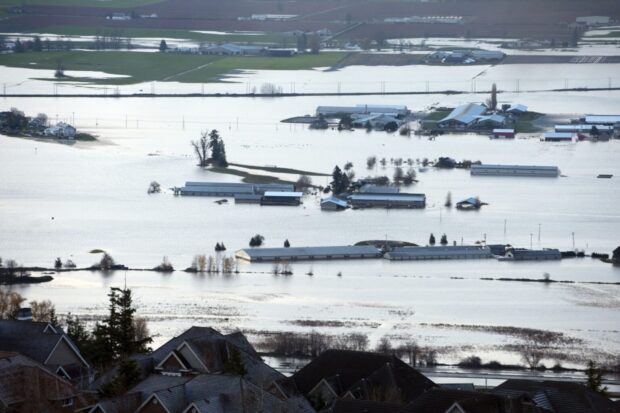November was a wet month in many countries across the globe, with heavy rains and flooding causing billions of dollars of economic losses, according to Aon’s monthly Global Catastrophe Recap report, which each month evaluates the impact of global natural disaster events.
“The reality of heavier rainfall events and subsequent flooding continues to become more evident on a seemingly monthly basis as new examples of extreme events occur,” said Steve Bowen, managing director and head of Catastrophe Insight for Aon’s Impact Forecasting team.
He noted that 2021 has recorded several record-setting events in Europe, Asia, Oceania and the Americas, “which has further exposed structural, agricultural and infrastructure vulnerabilities to high-intensity, low-interval rainfall occurrences. Recent events in Canada, India and Australia serve as reminders of the need to navigate the increasing volatility of these events and the interconnected and more severe risks they present.”
The report reveals that an “atmospheric river” caused catastrophic impacts in Canada’s southern British Columbia province in mid-November, resulting in a province-wide state of emergency and killing four people. Damage to property, agricultural interests and infrastructure was widespread, which also resulted in notable supply chain disruptions, said the report.
The economic loss was anticipated to approach or exceed $2 billion in Canada alone. Heavy rains also affected the U.S. state of Washington, where additional economic losses were estimated to reach $200 million.
Notable flooding in New South Wales and Queensland in Australia occurred during the second half of November, said the report, citing significant flooding along the Upper Lachlan River, where evacuation orders were issued for residents in Forbes. This was the wettest November for New South Wales and Australia since records began, said the report, noting that extensive damage to agricultural land occurred, with total economic losses initially expected to be in the 100s of millions of dollars.
Elsewhere, an active northeast monsoon affected parts of India and Sri Lanka from late October through November, killing at least 190 people in India and 27 in Sri Lanka. Tens of thousands of structures and vehicles were damaged or destroyed, along with agricultural land and infrastructure.
The report said total economic losses in Karnataka and Andhra Pradesh states (India) alone were estimated at more than $2.4 billion, with additional losses in neighboring states.
Other natural catastrophe activity in November included:
- Arwen, the first windstorm event of the current season to be jointly named by the UK Met Office, Met Éireann and the Dutch KNMI, primarily affected parts of the United Kingdom with strong winds and brought wintry conditions and disruption Nov. 26-27. Three people were killed, and power outages affected nearly one million people. Total economic and insured losses from the event were expected to reach tens of millions of euros.
- A pair of magnitude 6.0 and 6.3 tremors resulted in at least two fatalities, nearly 100 injuries and damage to 3,000 homes in southern Iran on Nov. 14. Local infrastructure was also impacted. Total economic losses were estimated at $165 million.
- A series of winter weather events in early and late November impacted parts of China, notably Inner Mongolia, Liaoning and other northern provinces. Total aggregated economic losses were estimated by the authorities at $1.1 billion.
- A slow-moving area of low pressure – known locally as Dana – brought inclement weather from Nov. 22-24, affecting parts of Spain with heavy rain, hail and snowfall. Eastern and northern coastal sections of Spain were worst affected. Flooding continued in Asturias, Cantabria and Pais Vasco in the following days. Losses were expected to reach into the millions of euros.
Source: Aon’s Impact Forecasting
Photograph: The flooded Sumas Prairie in Abbotsford, British Columbia on Nov. 17. Photo credit: Taehoon Kim/Bloomberg.





















 Five AI Trends Reshaping Insurance in 2026
Five AI Trends Reshaping Insurance in 2026  How Insurers Can Avoid Post-Merger Technology Failure
How Insurers Can Avoid Post-Merger Technology Failure  Why ‘Good Enough’ Is Killing Insurance: The Hidden Cost of Satisficing
Why ‘Good Enough’ Is Killing Insurance: The Hidden Cost of Satisficing  Surge of Supercharged Hurricanes Prompt Call for Cat 6 Classification
Surge of Supercharged Hurricanes Prompt Call for Cat 6 Classification 